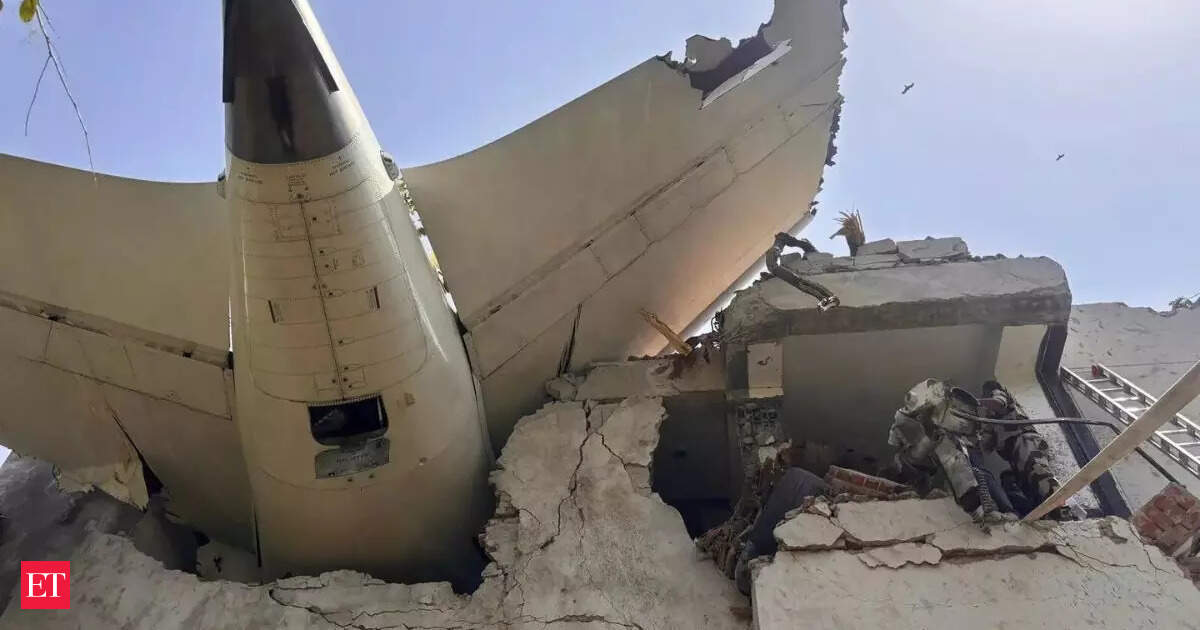Last month’s plane crash in Ahmedabad has made fliers nervous.
“After a tragedy like this, fear of flying naturally spikes,” said Shefali Batra, a leading Mumbai-based psychiatrist.
While investigations continue into whether pilot error or a mechanical fault with the Air India Boeing 787 Dreamliner plane was to blame for the accident that killed 260 people, what’s undeniable is the psychological fallout—a surge of flight anxiety, even among seasoned travellers.
A series of flight incidents associated with Air India and other airlines since the June 12 crash has added to their woes.
Mental health professionals say the emotional aftershocks of the Air India crash are real and spreading, triggered by increased access to social media content.
 Live Events
Live Events
“Social media exposure to aviation disasters is amplifying anxiety,” said Anjali Chhabria, a Mumbai-based psychiatrist. “Even if someone hasn’t experienced trauma personally, the constant stream of bad news creates a sense of danger.”K Dinesh, founder, Cockpit Vista, and a retired Indian Air Force wing commander, has seen it all—CEOs gripping books like life jackets, elderly couples haunted by decades-old trauma, and passengers frozen at boarding gates. Some drown the fear in music or medication, others, in alcohol. “Bars near boarding gates aren’t just for leisure. Some passengers knock back four or five pegs just to get on board.”Psychologists say the fear is more pronounced among high-calibre travellers like engineers, entrepreneurs, and scientists, who are accustomed to always being in charge. “Flying forces them to surrender—to an unseen pilot in a sealed cockpit,” said K Dinesh, of the Bengaluru-based counselling centre for fearful flyers. “That’s where the panic begins.”


The centre has seen a marked rise in inquiries after the Air India crash. Using flight simulators, it recreates take-offs, landings, turbulence, and cabin sounds in a controlled setting. “Most people don’t realise that not every bump or noise signals danger,” he said. “By the end of the course, even the most anxious begin to regain confidence.”
In a typical 180-seater aircraft, nearly 30-40%of passengers are silently battling some form of anxiety or phobia of varying degrees—a figure that aligns with global aviation data.
“People are altering travel plans, choosing trains over planes, or extending holidays to avoid flying. It may not be rational, but it’s completely human,” said psychiatrist Batra. “Our brains are wired to fear the recent and the dramatic.”
Dinesh cited the instance of a sharply-dressed executive sitting on a flight, seemingly calm, until he noticed sweat trickling down the man’s temple. “He hadn’t turned a page in 15 minutes. When I asked, he admitted, ‘I’m terrified of flying’.”
Contrary to assumptions, the fear isn’t restricted to novices and often, it permeates those with deep knowledge and analytical minds, according to aviation experts.
They noted that flyers realise that unlike cars or trains, flying does not offer an exit mid-way to the destination, which can be overwhelming for some. In extreme cases, flyers have demanded to be allowed off minutes prior to take-off.
For many, recovery starts not with the anxious flyer, but with an “enabler”—a parent, spouse or friend—who nudges them to seek help. At Cockpit Vista, these companions can attend sessions free of charge. “People don’t willingly sign up for fear therapy. But with someone by their side, they take the leap,” said Batra.
And the fear doesn’t always announce itself as a panic attack. Often, it creeps in quietly, changing behaviours. Chhabria notes that some couples now travel separately to reduce the chance of a shared disaster.
Even minor aviation incidents like runway overshoots or emergency landings can erode confidence. While airlines abroad such as British Airways and Lufthansa carry out formal fear-of-flying programmes, there is no such programme offered by Indian airlines currently, leaving Cockpit Vista as the sole structured support system for such passengers.
“The media forgets a crash in five days. But a fearful flyer remembers it forever,” said a therapist.
For many travellers, it is a battle fought not just in the air but well before they even reach the boarding gate in an airport.
